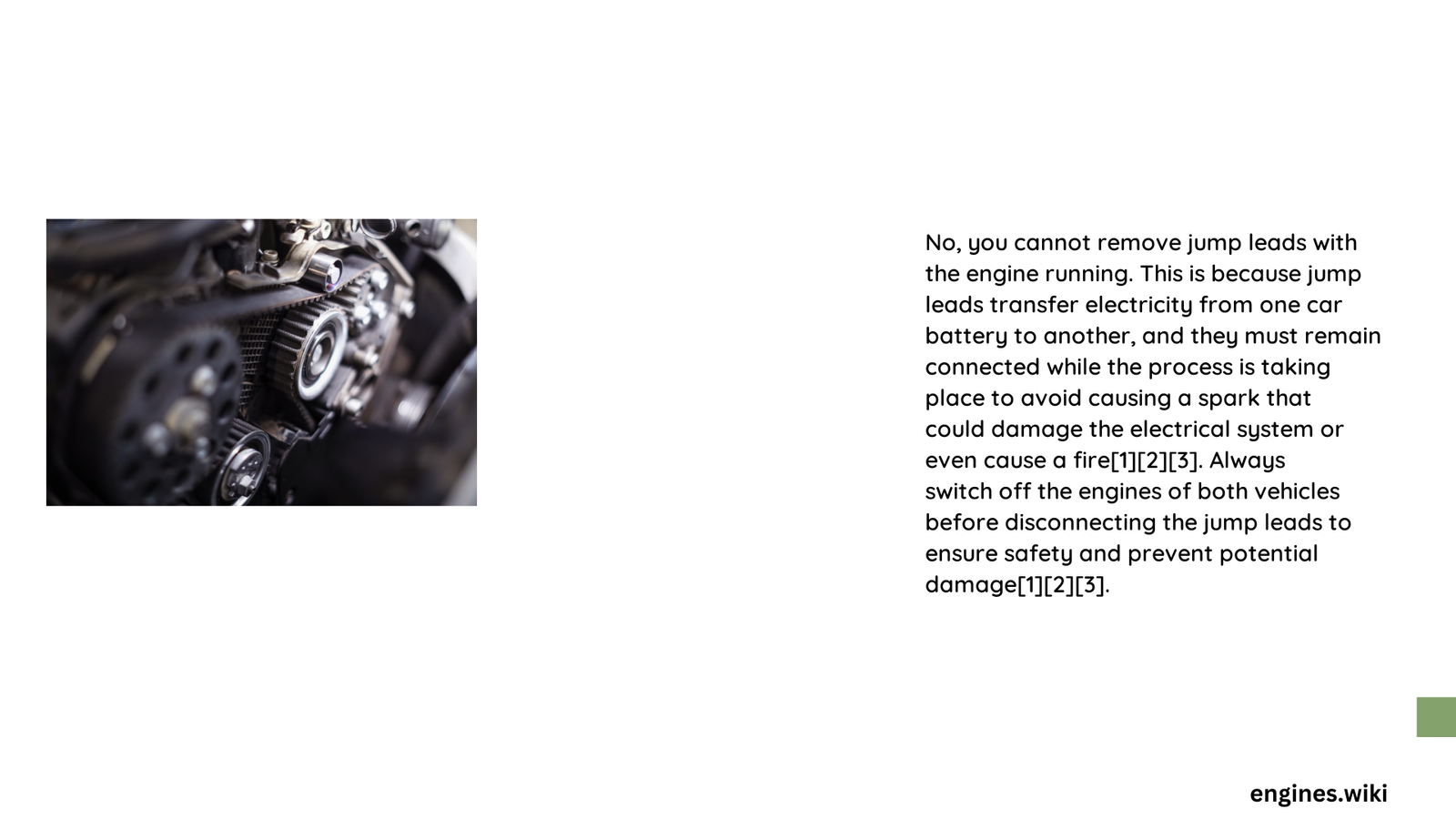Removing jump leads while engines are running poses significant electrical and safety risks that can potentially damage vehicle electronics, cause sparks, or trigger unexpected electrical surges. Vehicle owners must understand the complex dynamics of electrical systems and battery connections to prevent potential catastrophic failures during jump-start procedures.
What Happens When Jump Leads Are Removed with Running Engines?
Jump leads removal during active engine operation can trigger multiple dangerous scenarios:
Electrical System Vulnerability
- Potential Electrical Damage: Modern vehicles contain sophisticated electronic systems susceptible to sudden current disruptions
- Risk of Sensor Malfunction: Abrupt electrical changes might compromise critical vehicle sensors
- Potential Computer System Interference: Unexpected current fluctuations could reset or damage vehicle computer modules
Specific Risks During Disconnection
| Risk Category | Potential Consequence | Severity Level |
|---|---|---|
| Electrical Shock | Direct current exposure | High |
| Spark Generation | Potential battery area explosion | Critical |
| Electronic Damage | Sensor and computer system failure | Moderate |
Why Should You Avoid Removing Jump Leads with Running Engines?

Disconnecting jump leads while engines operate introduces multiple hazardous scenarios:
- Sudden Current Interruption
- Creates unpredictable electrical surges
- Potentially damages alternator components
-
Risks overwhelming vehicle electrical systems
-
Battery Hydrogen Gas Exposure
- Running engines generate additional hydrogen near battery
- Spark potential increases dramatically
- Risk of localized explosion escalates
Safe Jump Lead Removal Procedure
Recommended Steps
- Turn Off Both Engines: Safest primary approach
- Disconnect Negative Cables First: Reduces electrical tension
- Maintain Cable Separation: Prevent accidental contact
- Use Protective Equipment: Wear insulated gloves
- Inspect Cable Conditions: Check for wear or damage
Technical Considerations for Jump Start Safety
Battery Voltage Dynamics
- Standard vehicle batteries operate at 12 volts
- Sudden disconnections can generate voltage spikes
- Modern vehicles have more sensitive electrical systems
Professional Recommendations
Automotive electrical experts universally recommend:
– Complete engine shutdown before disconnection
– Careful, methodical cable removal process
– Regular battery and electrical system maintenance
Potential Consequences of Improper Disconnection
- Immediate Risks:
- Electrical system short-circuit
- Potential sensor damage
-
Battery voltage regulation disruption
-
Long-Term Implications:
- Reduced vehicle electronic reliability
- Potential expensive repair requirements
- Compromised vehicle performance
Expert Advice
Professional mechanics consistently emphasize that while technically possible to remove jump leads with running engines, the risks far outweigh any perceived convenience. Always prioritize safety and follow manufacturer-recommended procedures.
Final Safety Recommendation
Never remove jump leads with engines running unless absolutely unavoidable, and even then, exercise extreme caution.
Conclusion
Understanding jump lead removal requires comprehensive knowledge of automotive electrical systems. Always prioritize safety, follow professional guidelines, and when in doubt, consult a qualified automotive technician.
